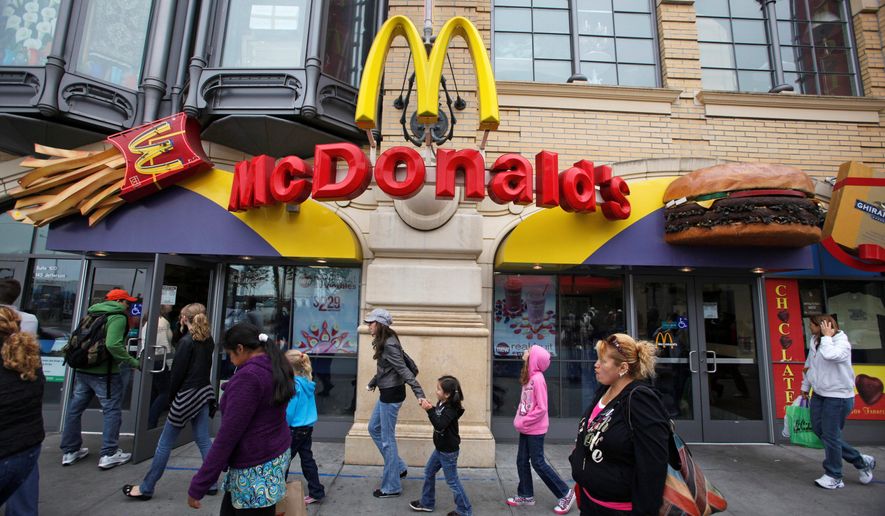PARAMUS, N.J. | The Goodwill store in this middle-class New York suburb was buzzing on a recent weekend afternoon. A steady flow of shoppers combed through racks filled with second-hand clothes, shoes, blankets and dishes.
A few years ago, opening a Goodwill store here wouldn’t have made sense. Paramus is one of the biggest ZIP codes in the country for retail sales. Shoppers have their pick of hundreds of respected names like Macy’s and Lord & Taylor along this busy highway strip.
But in the wake of the Great Recession, the stigma attached to certain consumer behavior has fallen away. What some people once thought of as lowbrow, they now accept — even consider a frugal badge of honor.
And it’s not just about Goodwill. Americans, even those with jobs, are shopping for brands, buying at stores and eating at restaurants they shunned previously. They are trying to get more for their money.
At the supermarket, shoppers are buying more store-labeled products, like no-name detergents and cereal, and not returning to national brands. And in a telling trend, Americans are turning to layaway more often when they buy expensive items such as engagement rings and iPads. Wealthier people are also using layaway more often, a drastic break with the past.
“The old stigmas are the new realities,” said Emanuel Weintraub, a New York-based retail consultant. “Now, people don’t have a problem saying, ’I can’t afford it.’ It’s a sign of strength.”
At the Goodwill in Paramus, even financially secure shoppers are showing up. One is Heather Dzielinski, from nearby Ramsey, N.J., who had donated things to Goodwill but never shopped at one of its stores until the Paramus location opened in July.
A pair of L.L. Bean fur-lined slippers for $8, far below the $50 retail price, got her hooked. She thought a Goodwill store would be dark and dingy, but it wasn’t.
“This store is a lot different than what I thought it would be, and that impressed me,” Ms. Dzielinski said during a recent visit. She picked up two shirts for her son costing about $4 each.
Thrift and consignment stores are thriving, so much so that some high-end retail stores are carving out space for second-hand goods as a way to offset weak sales of their full-price merchandise.
This behavioral shift is pronounced at the nation’s supermarkets. Store-branded groceries now make up 22 percent of total sales, up from 20 percent before the recession, according to the Nielsen Co. The private-label business is worth $500 billion a year, so even a 2 percentage point change means $10 billion.
Improved quality has helped drive the growth, but price also plays a big role. Supermarkets that stock almost all store brands are thriving. One is Aldi, a chain of more than 1,000 stores in the Midwest and on the East Coast.
At an Aldi location in Chicago on a recent evening, shoppers didn’t care that the only recognizable brands were the Splenda sweetener, a Butterball turkey and a few kinds of candy.
Six no-name grocery items — macaroni and cheese, potato chips, cream cheese, sour cream, olive oil and guacamole — cost about $10. The same six brand-name items cost $22 at the nearby Dominick’s.
“I started realizing that I could save $20 shopping here for my groceries, and I liked the products,” said Aline Silberg, a mother of two who works as a massage therapist and started coming to Aldi during the recession. “I stopped caring that they weren’t brands I knew.”
People are learning to live with trading down on clothes, too. Jaime Palmer of Dallas used to go to Neiman Marcus and spend as much as $300 on dress shirts by such high-end designers as Hugo Boss and Thomas Pink.
Now, Mr. Palmer, a 36-year-old a managing partner at an investment boutique, buys from a new label called J. Hilburn, which customizes dress shirts for a much lower price — $120. As for his suits, he’s turning to outlets.
“You don’t get the service. They don’t bring you coffee,” he said. “It did have a bit of a stigma for me.” But living through the Great Recession has made him reassess how he shops.
The search for value is also helping sales at fast-food restaurants like McDonald’s. Driving some of the sales gains are wealthier Americans who are eating at such establishments more often than before the recession.
New research from American Express found that the superaffluent, which it defines as those who put at least $7,000 a month on their credit cards, spent 24 percent more on fast food last spring than the previous year. They spent 12 percent more on fine dining.
Back in Paramus, the packed racks at Goodwill are sorted by style and color, much like a department store. Black pants all hang together. Sets of dishes are displayed on a large rack. The merchandise contains some recognizable names — Ann Taylor, Gap, Ralph Lauren, Lilly Pulitzer. Women’s shirts sell for $5.29, half that if they are the color of the week.
The Paramus store is one of 100 new locations for nonprofit Goodwill. Many are in middle-class suburbs. The strategy: Attract not only people in need, but also the many Americans who are looking for more value when they shop. Revenue this year is up 11 percent.
“We’re increasingly seeing our shoppers and donors can be the same people,” said Jim Gibbons, who is CEO of Goodwill Industries International, based in Rockville, Md.




Please read our comment policy before commenting.